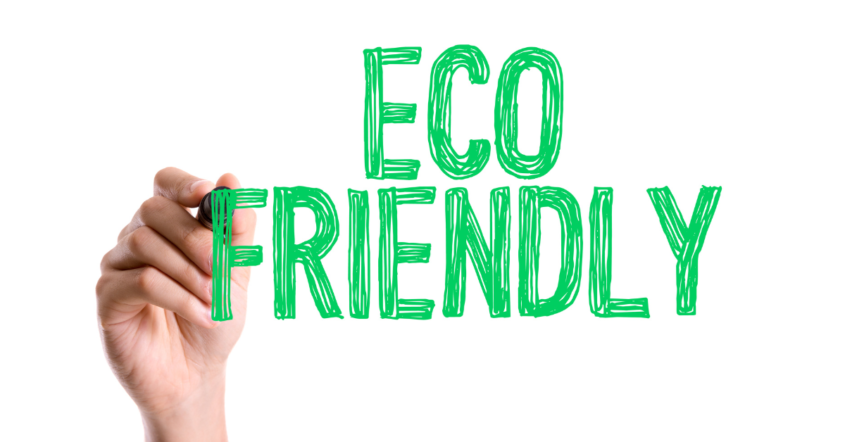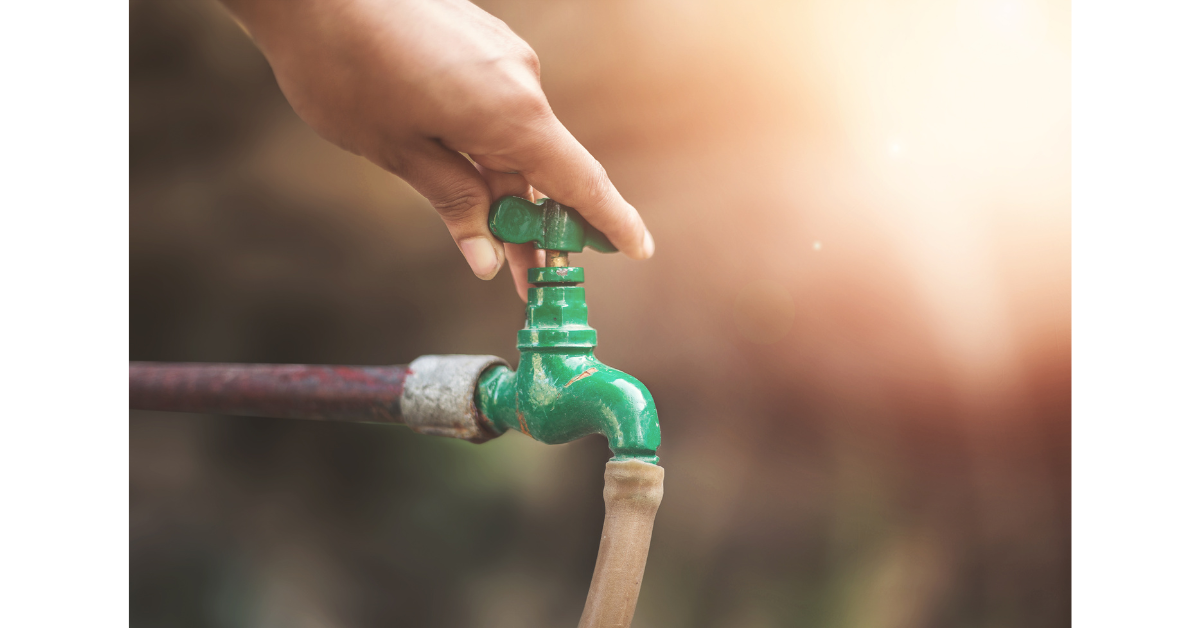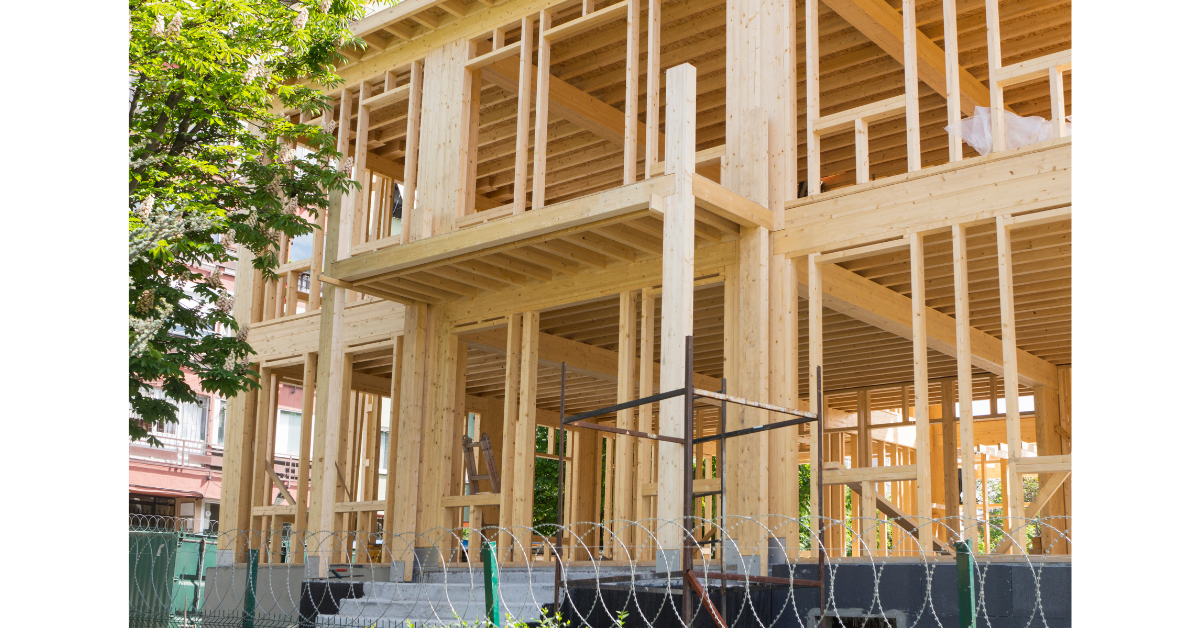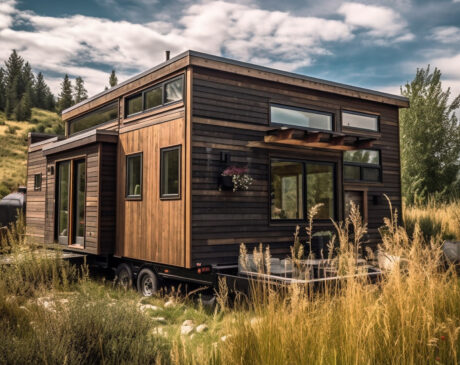What is the most eco friendly material to build a house?

We are living in an era marked by increasing environmental awareness and with a pressing need for sustainable practices, this lead us to the question that gives title to this article: What is the most eco friendly material to build a house with?
There are many subjects, in the construction industry, actively involved and challenged to find innovative solutions that minimise its carbon footprint.
Among these solutions, the choice of building materials plays a crucial role. With the concept of eco-friendliness gaining momentum, architects, builders and homeowners alike are seeking the most environmentally responsible materials for constructing houses.
This article delves into the quest for the most eco-friendly material to build a house and examines some promising candidates that align with sustainable principles.
What does it mean to live in an eco-friendly house?
Living in an eco-friendly house means you have to adopt a lifestyle aligned with the principles of sustainability and environmental responsibility.
It involves making conscious choices that reduce the environmental impact of daily activities, conserve resources and promote a healthier and more balanced life. Here’s what it means to live in an eco-friendly house:
- Reduced energy consumption: occupants of eco-friendly houses strive to minimize energy use by using energy-efficient appliances, turning off lights when not needed and utilizing natural daylight.
- Waste reduction: eco-friendly living involves reducing waste by practicing recycling, composting organic materials and making mindful choices when purchasing products with minimal packaging.
- Water conservation: residents of eco-friendly houses are mindful of water usage, adopting practices like using water-efficient fixtures, fixing leaks promptly and being conscious of water consumption during daily activities.
- Sustainable transportation: choosing sustainable transportation options such as walking, biking, carpooling or using public transit reduces the carbon footprint associated with commuting.
- Healthy lifestyle: living in an eco-friendly house often involves using non-toxic cleaning products, eating locally sourced and organic foods and promoting overall well-being. Take a look at our section on the healthy lifestyle to get an idea!
- Connection with nature: eco-friendly houses often incorporate elements that connect residents with nature, such as indoor plants, green spaces and large windows that allow for natural views and ventilation.
- Community engagement: embracing eco-friendly living extends beyond the household. It involves participating in community initiatives, supporting local sustainability efforts and advocating for positive environmental change.
Decide which of the most eco friendly material to build a house use to build yours is not easy
Living in an eco-friendly house goes beyond the physical structure, it’s a conscious choice to lead a more sustainable and responsible life that benefits both the individual and the planet.
By making thoughtful decisions in everyday activities, occupants of eco-friendly houses contribute to a more resilient and sustainable future.
Are we getting to the post’s topic, before that we need a bit of context tu understand some of the most eco friendly material to build a house.
What is a green building?
Green building, also known as sustainable building, is an approach to construction and design that prioritizes environmental responsibility, resource efficiency, energy conservation and occupant well-being. The primary goal of green building is to create structures that have minimal negative impacts on the environment while enhancing the quality of life for those who inhabit them.
Key principles of green building

- Energy Efficiency. Green buildings are designed to use energy more efficiently. This includes using high-performance insulation, energy-efficient windows, energy-efficient appliances and advanced heating, cooling and lighting systems to reduce energy consumption.
- Water preservation. Water-efficient fixtures, rainwater harvesting systems and drought-resistant landscaping are used to minimise water wastage and promote sustainable water use.
- Sustainable materials. Green buildings prioritise the use of environmentally friendly and non-toxic building materials. This can include recycled materials, sustainably harvested wood and low-impact manufacturing processes.
- Site selection and land use. The choice of building location can greatly impact its environmental footprint. Green buildings often take into account factors like proximity to public transportation, minimising disturbance to natural habitats and promoting mixed-use development.
- Indoor air quality. Indoor air quality is a significant concern in green buildings; non-toxic paints, finishes and materials are chosen to create a healthier indoor environment for occupants.
- Renewable energy. Integration of renewable energy sources such as solar panels and wind turbines can help power green buildings with clean energy.
- Design for longevity. Green buildings are built to last; durable materials and construction techniques are used to ensure the longevity of the structure, reducing the need for frequent replacements.
- Biophilic design. This design approach seeks to connect occupants with nature, integrating natural elements such as daylight, plants and natural materials to enhance well-being and productivity.
Criteria for eco-friendly building materials
We have tried to determine the most eco-friendly material for constructing a house using several key criteria.
We considered the following:
- Resource efficiency:
- an eco-friendly material should make efficient use of resources, including raw materials and energy, while minimising waste generation.
- Low embodied carbon:
- the carbon emissions associated with the entire lifecycle of the material, from extraction to production and transportation, should be minimal.
- Renewability:
- ideally, the material should be sourced from renewable resources or those that can be regenerated within a reasonable timeframe.
- Durability and longevity:
- a sustainable material should be long-lasting and resistant to deterioration, reducing the need for frequent replacements.
- Recyclability and reusability:
- the material should be recyclable at the end of its life cycle or, better yet, capable of being repurposed.
- Non-toxicity:
- the material should not release harmful chemicals or pollutants into the environment, ensuring a healthy indoor and outdoor living environment.
- Energy efficiency:
- the material’s thermal properties should contribute to energy efficiency within the constructed house, reducing the need for excessive heating or cooling.
Promising eco-friendly building materials
Here we are with the most eco friendly material to build a house and their characteristics.
Now, after the introduction you have all the concepts to understand the features of these materials.
Several materials have emerged as strong contenders for the title of the most eco-friendly material for building houses.

Wood
A king of construction materials in the past, has never been completely abandoned, for his excellent characteristics. Wood is still very popular and used.
Particularly sustainably harvested timber, is a popular choice due to its renewability, low embodied energy and potential for carbon sequestration. Wood structures can also be energy-efficient if designed properly.
Bamboo
Bamboo is a rapidly renewable resource that grows abundantly and matures quickly. It boasts impressive strength and durability, making it suitable for various structural elements.
Straw bales
This material is quite strange as a building material but as we know straw bale construction utilises agricultural byproducts that would otherwise go to waste. Straw bales provide excellent insulation and are highly energy-efficient.
Rammed earth
Rammed earth construction involves compacting layers of earth to create walls. It’s a low-energy process that utilizes readily available materials and offers natural thermal mass.
Recycled materials
Using recycled materials like reclaimed wood, recycled steel or recycled concrete can significantly reduce the demand for new resources and divert waste from landfills.
Hempcrete
Hempcrete combines hemp fibers with lime and water to create a lightweight and insulating material. It absorbs carbon dioxide during its curing process, contributing to carbon reduction.
Precast concrete slabs
Another option worth considering during the construction process is the utilisation of precast concrete slabs.
Slabs are crafted at a dedicated manufacturing site and subsequently transported to construction sites as complete sections.
Some of these slabs consist entirely of concrete, incorporating significant hollow air spaces akin to concrete blocks.
Precast concrete slabs find applications in constructing walls and building facades due to their resilience against various weather conditions; others can be employed for flooring and flat roofs.
Cork
Much like bamboo, cork exhibits rapid growth characteristics.
Cork can be harvested from a living tree, allowing the tree to continue growing and producing cork without requiring its felling. This is great because distinct cork from other timber sources and makes it more sustainable.
This material possesses remarkable attributes that render it an ideal construction resource. Its resilience, flexibility, and ability to revert to its original shape even after enduring pressure render it highly versatile. Notably, its resilience and capacity to dampen noise make it a popular choice for flooring tiles.
Moreover, cork boasts excellent noise absorption capabilities, making it well-suited for insulation sheets. Its exceptional shock absorption qualities position it as an excellent option for sub-flooring.
Cork serves as a proficient thermal insulator and is fire-resistant, particularly when untreated. Additionally, it does not emit toxic gases when subjected to combustion.
Moreover, due to its nearly impermeable nature, cork remains resistant to water absorption and rot.
Conclusion
The quest for the most eco-friendly material to build a house is an ongoing journey.
It should considers a multitude of factors and the characteristics of the materials chosed.
While no single material is a perfect solution, several options align closely with sustainability principles. Wood, bamboo, straw bales, rammed earth, recycled materials, cork, precast concrete slabs and hempcrete are all promising choices that offer varying benefits in terms of resource efficiency, low carbon footprint, renewability and more.
Ultimately, the choice of material you can use to build your hoise should be guided by a holistic perspective.
A perspective that should takes into account the specific context, design requirements, and the overarching goal of minimising environmental impact while creating comfortable and durable homes for future generations.



